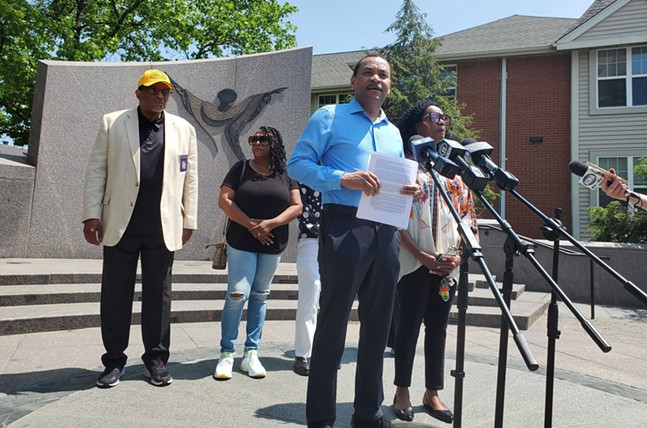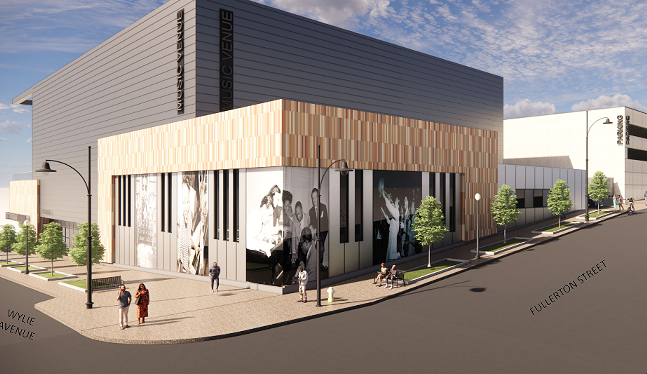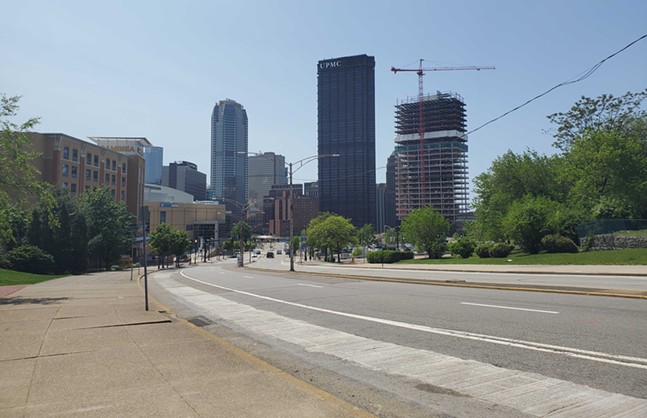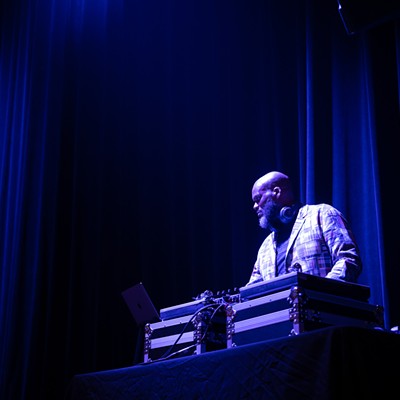
A swift resolution to years of tense negotiations over a $110 million development project in the Hill District spelled welcome news last week to the Pittsburgh Penguins and a handful of other stakeholders. But a number of local civic leaders say it came about through last minute deal-making that left them in the dark.
On Thursday, May 11, Pittsburgh’s Urban Renewal Authority Board unanimously lit the way for developers Buccini/Pollin Group to begin constructing a 4,500 live music venue on a 3-acre site in the Lower Hill. The project was first proposed by the Pittsburgh Penguins in 2019, but pressure from civic groups to ensure its positive contributions to the community held up progress until now.
The Hill Community Development Corporation (CDC), a key player in the negotiations, finally lent its support to the project ahead of the board vote. But the leaders of three similar organizations — the Hill District Consensus Group, Uptown Partners of Pittsburgh, and Hill District Collaborative — say this is because the CDC was slipped a $2 million grant offer to sweeten the deal, while they were excluded from the negotiations.
During a press conference Monday, community leaders said those funds — allocated for restoration work on the historic New Granada Theater — should instead be applied to the community’s affordable housing crisis.
“Our main concern is that the URA would allocate $2 million without any public comment or oversight to one group, where we are concerned about the city that their priority is not housing,” said Randall Taylor of the Hill Consensus Group. “We're losing residents from this community on a daily basis. There's people who are leaving their homes on a daily basis.”
As well as criticizing the substance of the negotiations, Hill community voices also called out the manner in which they took place.
A press release issued ahead of the conference said it reflected “the private meetings and conversations” of URA board members, the CDC’s executive director, City Councilor Daniel Lavelle, and several senior members of Mayor Ed Gainey’s administration.
“I just want to put it out there that it is totally wrong and unethical for political leaders and officials to make behind-closed-door-deals on behalf of the community,” said Carol Hardeman, executive director of the Hill Consensus Group.
The money pledged for the theater redevelopment did not appear to be approved during the formal URA meeting, where the live music development plan was greenlit.

In a detailed statement, the CDC laid out a different narrative, focusing on concessions made by the developers to solidify gains for the community. These include a $2 surcharge levied on all ticket sales that will be pooled into the Greater Hill District Neighborhood Reinvestment Fund, a $1.2 million contribution toward the development of an on-site public safety facility, and two cash injections totaling around $900,000 into the Ammon Youth Center.
“The Hill CDC’s involvement with the Lower Hill District project dates back to the beginning of negotiations as early as 2007,” Marimba Milliones, CDC executive director wrote in a statement. “It is this experience and day-to-day difficult labor by the Hill CDC on the Lower Hill project that has enabled the organization to negotiate over $45M in commitments due to come back to the Hill District in the coming years.”
In response to questions about the alleged $2 million pledge to support the CDC’s historic theater project, Milliones said city officials simply committed parts of a grant request already in place.
“The Hill CDC has a request into the City and URA for at least $5M for the first phase of New Granada development which is $36M,” Milliones wrote in an email. “The City and URA have committed a portion of the $5M as a part of their Block E commitments.”
Milliones affirmed her organization’s commitment to housing and acknowledged the political tension between the CDC and other civic groups.
“The RCO process is rife with issues of interference from private developers and a lack of public accountability to those who say they speak for communities such as the Hill District,” she wrote.
Approval for the live music venue comes alongside a series of major development projects across the lower Hill region, including the construction of a 26-story skyscraper under construction that’s soon to be the new home for First National Bank.
In the 1960s, a swathe of homes and businesses were razed in the Lower Hill for the construction of the original Civic Arena. Now, plans to redevelop this section of Pittsburgh’s largest historically Black community have raised thorny questions about economic and racial justice as developers along with city and community officials are pressed to right past wrongs.

Tanika Harris, communications director for the URA, said in a statement, the authority’s “investment in the Hill District is not limited to the Hill CDC. We are committed to ensure reactivation along Centre Avenue and beyond.
“The Avenues of Hope Initiative is being realized as a result of the URA's development efforts along the Centre Avenue corridor,” she added. “For the past four years, the URA has been working with the Hill CDC in developing a capital stack for the New Granada Theater.”
Lavelle’s office did not respond to a request for comment at the time of publishing, but during last week’s URA meeting, he voiced support for the project before committing his vote of approval.
“The commitments that were identified in the 2019 term sheet are indeed being realized,” said Lavelle, the board’s vice chair. “The promises that were being made around the investment into the greater Hill District are indeed being made today.”
Gainey’s office did not respond to a request for comment at the time of publication.
Kevin Acklin, President of Business Operations for the Pittsburgh Penguins, highlighted promises made by his organization while noting, “any additional public funding being directed to the Hill CDC beyond our private contributions are within the purview of the city and URA officials.”
“We made good faith financial commitments at the request of the Mayor’s Office to help support the entire Hill District, including private investments into Ammon Recreation Center, a new public safety facility, job training opportunities for residents, and operational support for the New Granada Theater project,” he said.


















